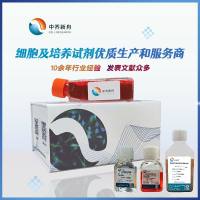|
Purpose
To describe the maintenance of cells in culture.
Safety
Equipment
-
Laminar flow hood
-
CO2 Incubator
-
Mechanical Pipettor
-
Inverted microscope
-
Vacuum pump and flask
Materials
-
Complete cell culture medium, appropriate for the cell line
-
Tissue culture flasks of appropriate sizes
-
Tissue culture plates - 96 well or 24 well.
-
Sterile pipets, assorted sizes
-
Multichannel pipet and sterile tips.
-
Pasteur pipets, 9¡±, sterile, unplugged.
-
70% alcohol
-
Sterile Petri dishes.
Procedure
-
General considerations
-
Turn on the hood and allow to run for at least 10 minutes before starting.
-
Pre-warm all media in 37o C water bath.
-
Wipe all surfaces with 70% alcohol before starting.
-
For cells in flasks.
-
Cells are split or refed every 3-4 days.
-
Remove the flasks from the incubator. Examine flasks with inverted microscope.
-
Place flasks and medium under hood.
-
Remove an aliquot of the cell suspension for counting with a hemocytometer (SP 05-009) and viability determination (SP 09-005).
-
Label the appropriate number of new flasks with the cell line name, the passage, the slit ratio or seeding density and the date.
-
Aseptically transfer the required number of cells to the new flask. Add fresh medium to the flask.
-
For T-25 flask - maximum of 10 ml of medium.
-
For T-75 flask - maximum of 50 ml of medium.
-
For T-150 flask - maximum of 100 ml of medium.
-
For T-225 flask - maximum of 200 ml of medium.
-
Recap the flask(s), gently shake to evenly disperse the cells.
-
Return the flasks to the incubator. Loosen the caps 1/2 turn, if necessary.
-
For 96 well plates.
-
Plates are re-fed every 3-4 days.
-
Remove the plates from the incubator, and examine microscopically or with the mirror. Mark wells that are positive for cell growth.
-
Place plates and medium under the hood.
-
If supes are being collected for an assay, pre-label the plates for the supernatants.
-
Transfer 150 ml of supernatant to the clean, labeled plate.
-
Store all supernatant plates at 2-80 C until ready to assay.
-
Remove spent medium with a sterile Pasteur pipet attached to a vacuum. Hold the pipet at a 45 degree angle about 1/2 way down the well.
-
Start at the top left corner of the plate and work back and forth across the wells to the lower right corner.
-
Repeat with all plates.
-
Aseptically transfer medium into sterile Petri dish. Add 150-175 ml of fresh medium into each well using a multichannel pipettor. Work from the end of the plate furthest from your hand, to minimize the number of times your hand passes over the plate.
-
Repeat with all plates. Add additional medium to a new, clean Petri dish if more is needed. Change pipet tips for each plate.
-
Return the plates to the incubator.
-
For 24 well plates
-
Remove plates from the incubator and examine microscopically.
-
Place plates and medium under the hood.
-
If supes are being collected for an assay, pre-labels the plates for the supernatants.
-
Transfer 1-2 ml of supernatant to the clean, labeled plate.
-
Store all supernatant plates at 2-8o C until ready to assay.
-
Remove spent medium with a sterile Pasteur pipet attached to a vacuum. Hold the pipet at a 45 degree angle about 1/2 way down the well.
-
Start at the top left corner of the plate and work back and forth across the wells to the lower right corner.
-
Repeat with all plates.
-
If cells need to be split, indicated by orange colored medium and the cells covering more than half the surface of the well, add 2 ml of fresh medium to the well.
-
Add 2 ml of fresh medium to each well.
-
Return the plates to the incubator.
-
Transferring cells from a 96 to 24 well plate.
-
Identify the clones to be expanded.
-
Using a sterile pipet tip and pipettor, resuspend the cells by pipetting.
-
Transfer 150 ml of the cell suspension one well of a pre-labeled 24 well plate.
-
NOTE: Use only the top row of each 24 well plate for new clones to allow room to expand the cells down the plate as they grow.
-
Add 2 ml of fresh medium to each well of the 24 well plate. Add 150 ml of fresh medium to each 96 well.
|








